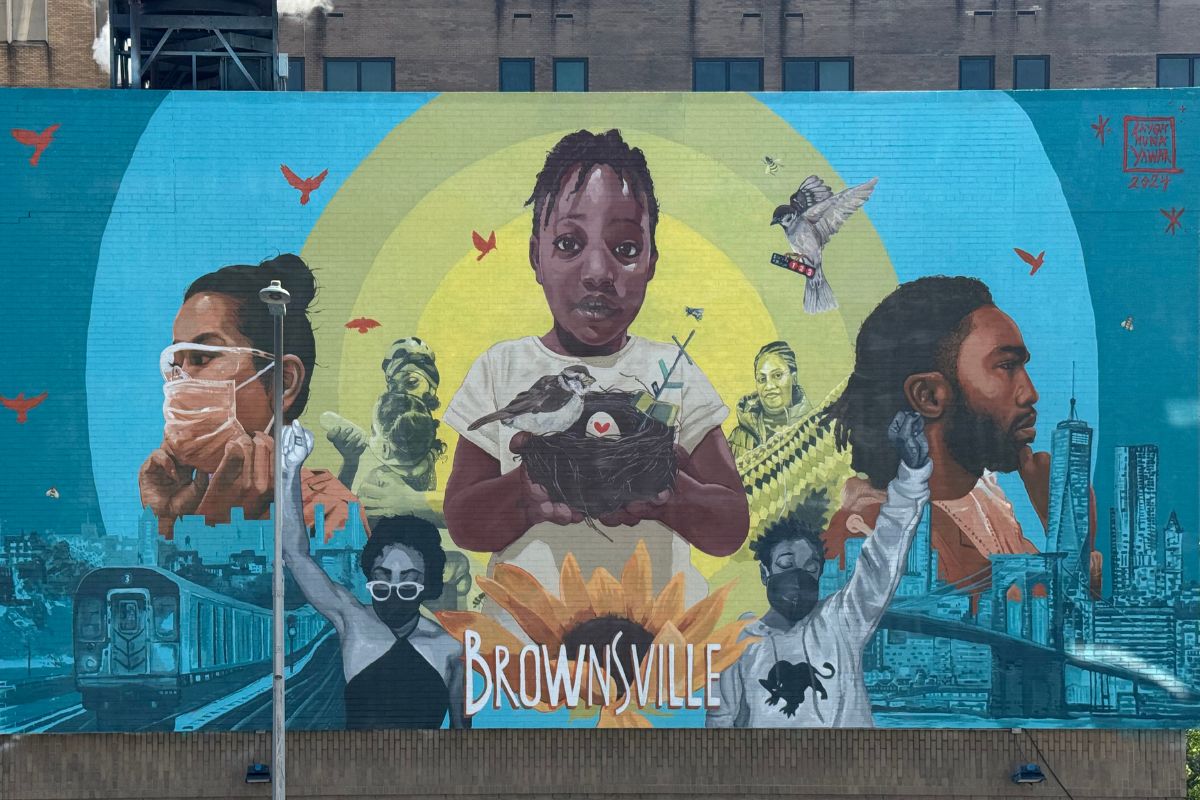
The current water crisis puts communities and utilities at odds with one another. Water utilities across the country are often reliant on customer payments as this is the only reliable revenue they have to operate and maintain their services. This system is fragmented and vulnerable to economic shocks, and it incentivizes water shutoffs. One lasting economic shock is the ongoing COVID 19 pandemic.
Unemployment skyrocketed to 14.8 percent in April 2020 and was still at 6 percent nearly a year later, in March 2021, the US Bureau of Labor Statistics detailed in October 2022. Although bill moratoriums offered some protections against utility disconnections and late fee add-ons, many people still struggled to pay their utility bills—including their water bills.
Water utilities suffered revenue losses totaling $13.9 billion and wastewater utilities losses totaling $12.5 billion, a National Governors Association memo cites. Continued revenue loss from lack of payment, which results in water shutoffs, is cyclical and unsustainable. The US Water Alliance—a national nonprofit that aligns various stakeholders to solve this current water crisis—is tackling this issue head on.
Insights on Water Shutoffs and Access
The alliance recently published a report titled “The Path to Universally Affordable Water Access: Guiding Principles for the Water Sector,” which stems from a nationwide pilot program aimed at developing alternative water affordability practices. “This led to more than 18 months of convening across eight US cities to learn how widespread [water] shutoffs are, how they’re applied, and the impact that they have on individuals and communities,” US Water Alliance CEO Mami Hara told NPQ.
The pilot also sought to understand how utilities can use resources at hand and move away from a model that relies on customer payments, which impact low-income individuals and families the most. For years, the key question was, “Should utilities use water shutoffs or not?” The Water Alliance is changing that question to, “How can utilities, communities, and policy makers work together to create an environment in which shutoffs for low-income families are not necessary?”
The pilot launched in eight cities, including Seattle, WA; Buffalo, NY; Cincinnati, OH; Louisville, KY; and Milwaukee, WI; among others. Each city had teams of community-based organizations, utility staff and representatives, and social service providers that served areas impacted by water shutoffs. Guided by the alliance, the teams gathered data that would inform policy changes for water utilities.
That data revealed several insights. One, there is little empirical data at the national and local levels about shutoffs as utilities are not required to collect such data. The few utilities that do track such data are not required to share it. Understanding who is having their water shut off and how this impacts a utility’s finances is necessary to create equitable, informed policy. “In the absence of data and analytics, policymaking is influenced by assumptions and impressions rather than empirical evidence about customer circumstance, intent, and behavior,” the report states.
Harmful assumptions about payment behavior effectively criminalizes poverty and understates the harm that water shutoffs cause to low-income communities. In customer assistance programs, there is a belief that fraud is rampant, but existing research fails to back this assumption up. Indeed, studies of low-income assistance programs have shown that fraud is uncommon. For example, fraud in SNAP benefits is as low as 1.5 percent a 2018 report detailed.
Another important insight was that water affordability was a crisis before the Covid 19 pandemic—with up to 20,000 accounts being shut off across the eight pilot cities between 2018 and 2019. The same areas experiencing water shutoffs had other equity indicators, such as air quality issues, urban heat islands effects, high unemployment, or historic redlining. Water shutoffs continued to impact low-income neighborhoods during the pandemic. However, “newly in need” households in middle- and higher-income areas saw a rise in unpaid utility bills and water shutoffs due to sudden job losses and economic downturn. Despite payment moratoriums, “the number of customers who continued to pay regularly suggests how strongly they value water services,” the Water Alliance report details.
Some water utility debts are higher than what low-income customers can afford to repay. Data from the report also shows that in many of the pilot cities, 10-15 percent of customer accounts had experienced a shutoff. In one pilot city, as many as 20 percent of customers had experienced continued shutoffs. While many believe that water shutoffs incentivize customers to pay, further exploration of the tradeoffs that people make when they don’t pay their utility bills is critical. For cities that tracked this metric, lower-income households experienced shutoffs for more than a week at much higher rates than higher income households. Census tracks revealed that majority Black and Latinx areas had four and three times longer water shutoffs, respectively, than majority white census track areas. Community pilot participants shared that people experiencing long water shutoff periods used strategies such as filling up buckets of water at neighbors’ homes or buying bottled water, which costs less than minimum reconnection payments.
Sign up for our free newsletters
Subscribe to NPQ's newsletters to have our top stories delivered directly to your inbox.
By signing up, you agree to our privacy policy and terms of use, and to receive messages from NPQ and our partners.
Water Utilities and Community Relationships
The pilot helped the utilities seek out other funding options like distributing relief funds, consider new rate structures, and expand customer assistance programs. More importantly, it sparked conversations and collaboration. “That relationship didn’t exist with SPU (Seattle Public Utilities) before the pilot,” said César García, a pilot community participant and cofounder of the Seattle based organization, Lake City Collective.
García and his wife, Peggy Hernandez, are based in North Seattle and started the Lake City Collective in 2019, after Hernandez began advocating for changes in their neighborhood. Currently, Lake City Collective is the only BIPOC-led, community-based organization in North Seattle. In 2021, the collective was tapped to be a community partner in the pilot because of its existing relationship with Seattle’s Department of Neighborhoods.
It took some time for García to fully grasp the pilot’s goal. The collective’s involvement in the pilot was also a crash course in water utilities and how they operate. Pilot participants like García took on advisory roles and brought to light overlooked issues. For the Lake City Collective community, one big issue was the lack of renter representation. “So, what we heard was that the main goal [of the pilot] was single family homes,” said García. But most of the community that the Lake City Collective serves are renters. “I learned that for the utility, renters like me are not seen as individuals…[but] as commercial accounts,” said Garcia. In this case, only the owner of a property is recognized by the utility, meaning that there is no relationship between the utility and renters. For García, this was troubling.
Advocating for renters became a central part of his participation in the pilot, as convincing utilities to humanize their customers is crucial to shifting policy. All community pilot participants across the eight cities, including the Lake City Collective, received mini grants as compensation for their time and to do neighborhood outreach. The collective conducted comprehensive interviews with community members to understand their challenges. For some of the people García spoke with, water debt was of major concern as they had experienced shutoffs. For others, “the reason they decided not to pay was because there were other necessities before that,” said García.
Water Access, Affordability, and Its Intersections
Across the United States, water contamination is a pressing issue. “A lot of people don’t necessarily see the correlation between affordability and contamination,” said Mami Hara, CEO of the US Water Alliance. Contamination often drives up treatment and therefore service costs and is a pervasive environmental justice issue. “Addressing contamination that threatens our water supplies and escalates that need for poor communities to bear the burdens and the costs are of significant concern,” said Hara. Hara also points out that communities often don’t realize that they’re struggling to pay for escalating, accrued water management costs that are driven by climate change. Growing cost of supplies and diminishing sources of water are two major areas of concern.
The report concludes with guiding principles on how utilities can develop better informed affordability policies and prevent shutoffs. The pilot helped utilities embrace the critical role they play in ensuring their customers’ health and explore ways to relieve water debt stress.
But structural change comes with challenges; the pressure to make these changes falls almost entirely on utilities, which cannot raise rates to cover rising service costs without impacting low-income areas. There are also statutory constraints on utilities’ ability to implement affordability programs. However, there is power in utilities joining forces to advocate for increased state and federal funding and policies that reflect community needs. The pilot also showed the importance of building staff capacity, which can look like hiring from and developing leadership in impacted communities.
Water affordability intersects with energy and housing justice as water shutoffs have led to children being separated from their families and people becoming unhoused. The report also highlights how siloed the water utility sector has been and insists that building collaborative relationships is one way to approach equity issues. It points to the alliance’s five interlocking solutions, which serve as implementation strategies for utilities. These solutions are:
- Price water to reflect its true value and the cost of service
- Provide affordable, universal access to water
- Catalyze utility partnerships and consolidations
- Deploy smart water operations at scale
- Use water as a pathway to address the climate crisis
Recognizing water access as a public good and changing the relationship that exists between communities and utilities is key to water shutoffs not harming low-income communities and utilities being able to fully serve their customers.











